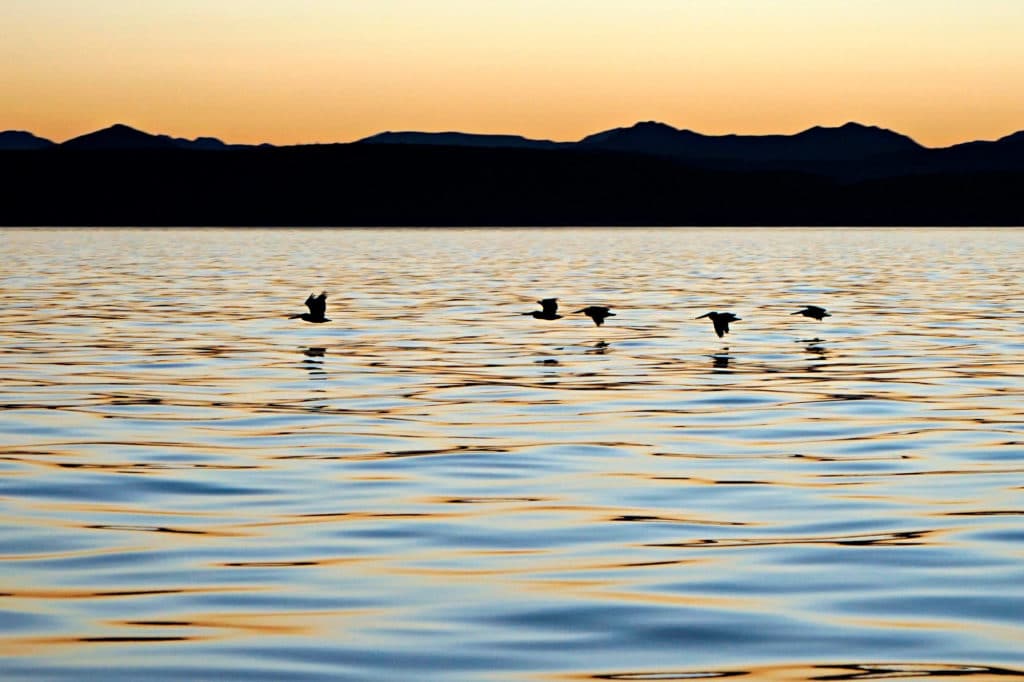
This story originally appeared on Sailing Totem.
The passage was brief; just 250 nm from the middle of Baja to the top of Gulf. We broke it up over three days, spending the first night anchored and the second underway. As miles passed under Totem’s keel, the Sea of Cortez served up some of the best it has to offer, while reminding us of the worst.
Katabatic wind
The worst part, thankfully, was early and brief. This region serves up land-driven katabatic winds that are hard to accurately forecast; they earn every bit of respect you can give them. We knew there would be katabatic wind coming out of Santa Rosalia on Friday morning, and anticipated around 30 knots. Reality: solid 40s with a top gust at 52, right on the beam.
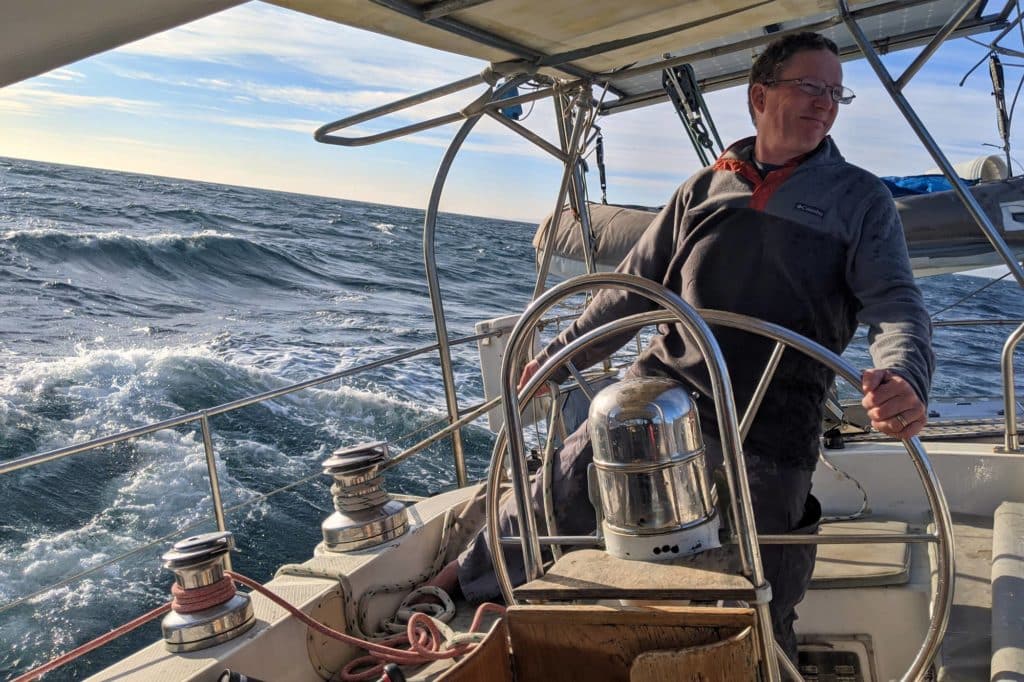
After two hours it abated, and the 20-knot range felt like a reprieve…until it clocked around to come out of the north. Of course, this was the direction we wanted to go. Unpleasant seas often go hand in hand with this wind, especially if current is involved; in the northern Sea, current is frequently involved. But within four hours of leaving the dock, the winds dropped to negligible levels and the seas flattened for the rest of the journey. Eventually, the horizon merged with the sky over geometric patterns of our wake.
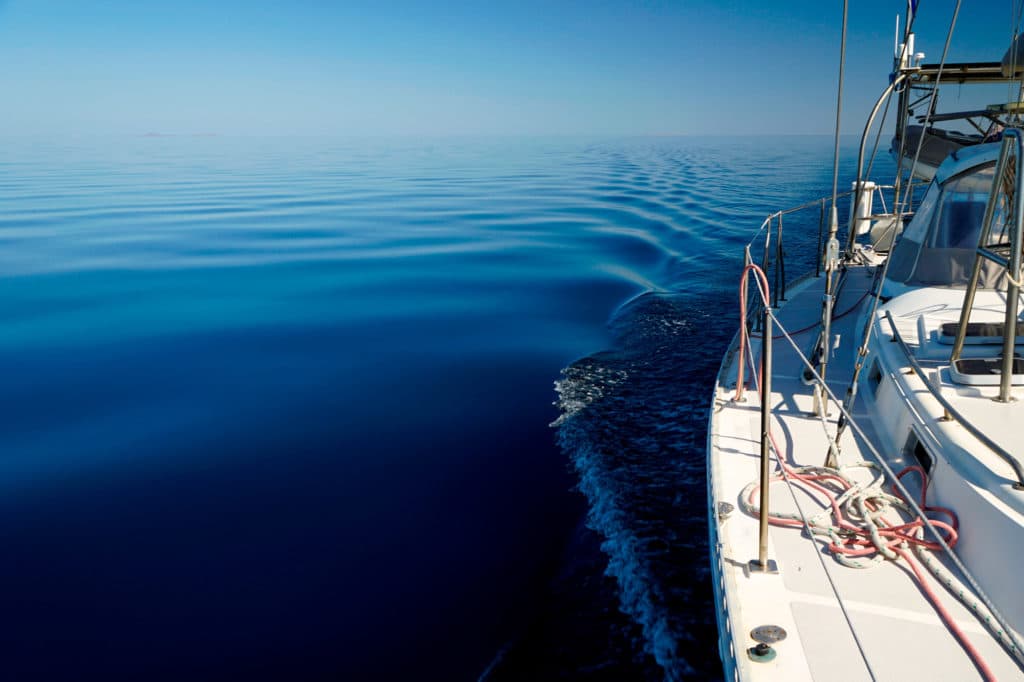
Remote anchorages
The first day’s adverse conditions gave us a late arrival to our destination, Bahia San Francisquito. While we don’t like arriving after dark, we’d been here before: Totem’s prior tracks and anchor waypoints, and our familiarity with the bottom composition, made us comfortable slipping in in the dark hours before the moon rose. Not a single light winked out from shore. After the bustle of a village waterfront, the near silence of this bay amplified the smallest sounds: every rasp of water retreating from the rocks, every bird call, every distant coyote yip.
There was no need to rush off Saturday morning: we had plenty of time to go overnight and arrive in Puerto Peñasco before sunset on Sunday. Slow brunch matched the mood, and was the excuse to open a special jar of honey (yes, there are special jars of honey. Check out State Street Honey. Not just special because they are sailors!). Drizzled on cornbread toasted in the pan that fried up our bacon, it was a bit of heaven.
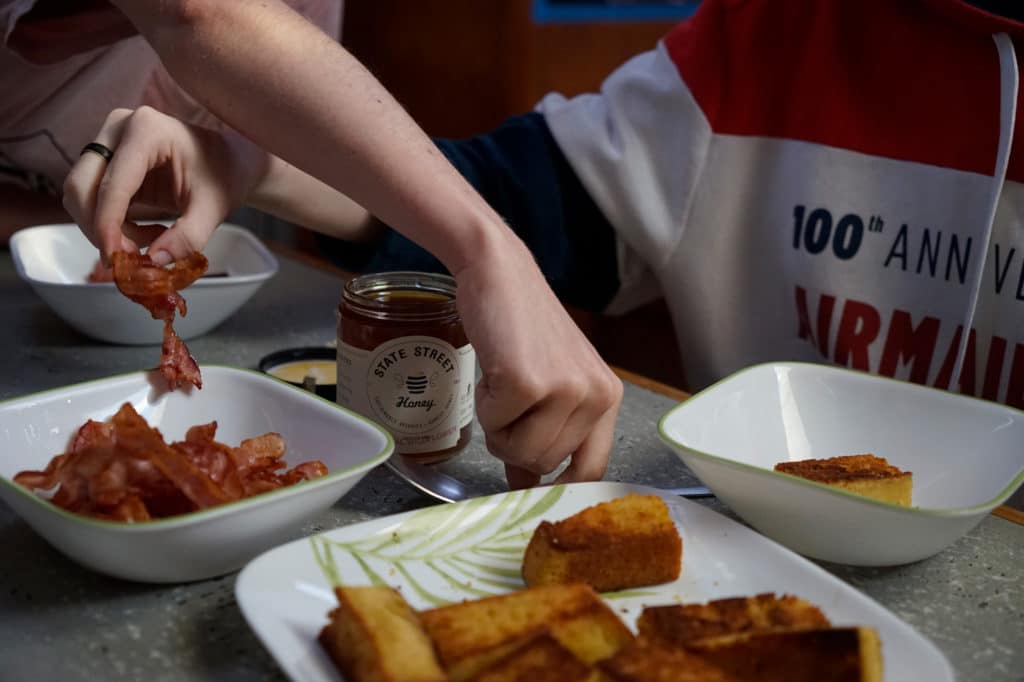
The girls called out from the bow to share critters they’d spotted in the water below. In the drift carved by our anchor chain, a pair of starfish appeared to have been spinning: perhaps they all found tasty treats in the disturbed bottom? Dozens of small stingrays—the little guys that whack you if you’re not careful—fluttered over the sand 20 feet down. A shovelnose shark—then a second—glided and grazed while the sunshine warmed our bones.
Friendly fisherfolk
Anchor up and underway, our northbound track wove between Baja’s mountains and the wild islands just off the coast. Bays we keep meaning to visit fall behind our wake with another promise to return, someday. Passing an island darkly named “Get out if you can”—Isla Salsipuedes—a panga comes charging up, the pangueros whistling to get our attention.
Jamie calls me to the cockpit, because my Spanish is better—but their universal sign for drinking is unmistakable. Agua, water, yes—we can help! Their stash ran thin, but we have plenty, and pass a few gallons filled from our tanks across along with a package of cookies. Would we like scallops? Why, yes, and thank you! With big smiles and gestures of gratitude on both sides, our boats part ways—and a kilo of gorgeous scallops remain aboard Totem.
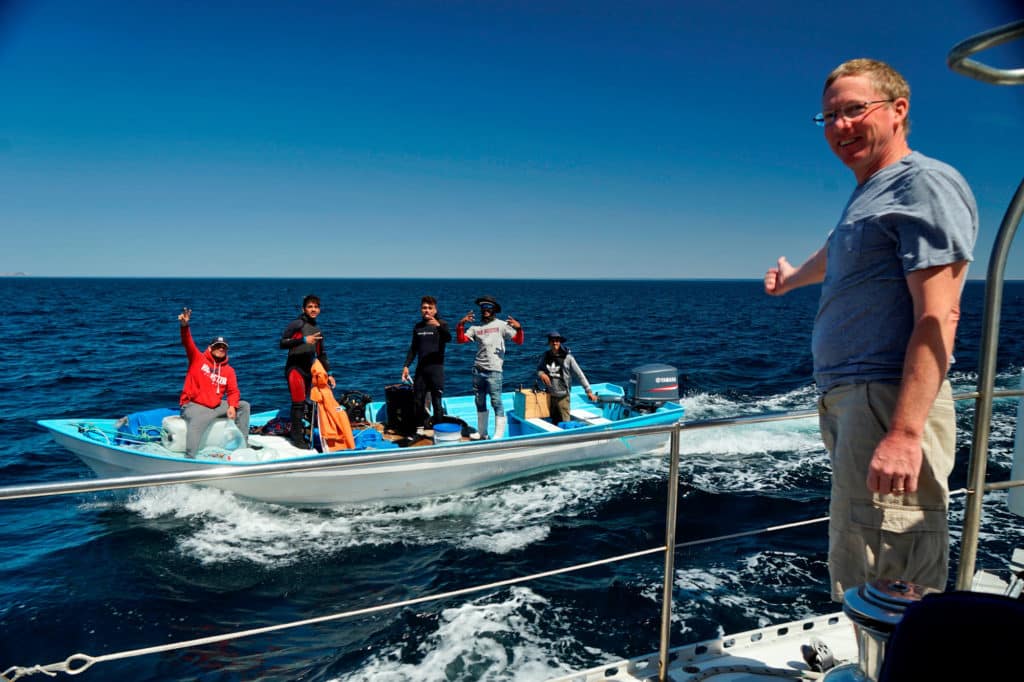
The respite of being off-grid
Cell towers fade with the lights of Santa Rosalia; the northern Sea disconnects us from our internet tether in favor of connecting with the landscape and each other. Eagerly anticipating an internet break, we remain just in touch enough in contact with our IridiumGO. It’s welcome headspace to ruminate, to make plans, and to just share the space together.
Our progress is so smooth, Easter egg dying is possible. Dye concocted from turmeric (yellow), red cabbage (blue), and onion skins (chestnut) fills glasses nearly to the brim; one at a time, eggs lowered in to be steeped and tinted. They’re baked into a wreath-shaped braided loaf the following morning.
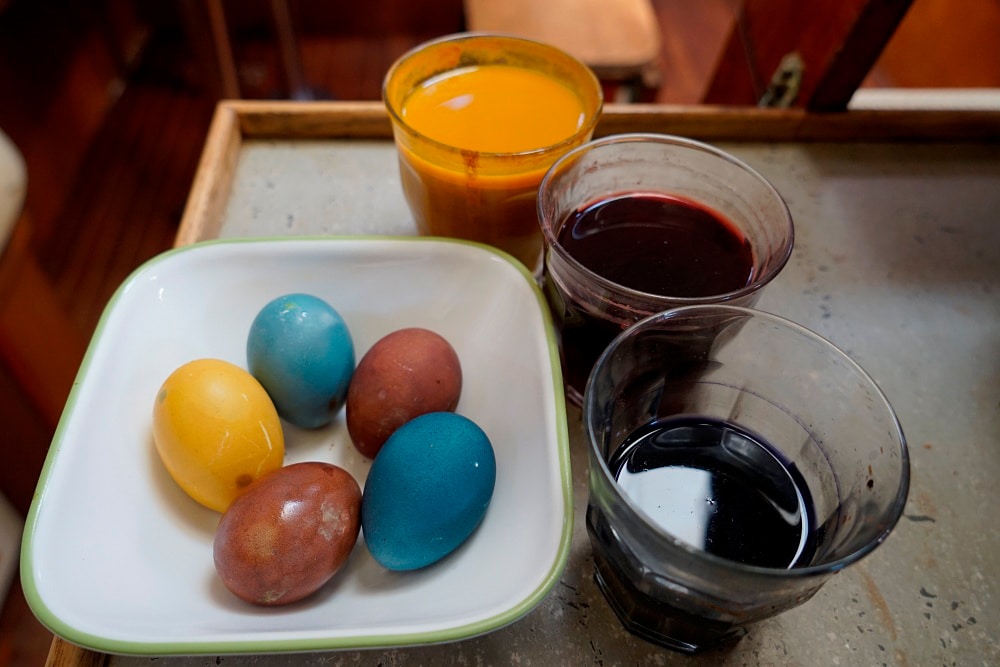
An organizational spurt strikes, and I turn around to find one of our pantry lockers has been emptied and is in the process of being cataloged. As much as wind to sail would be nice, the utter stillness makes it easy to see a distant school of fish, the centric circles marking cormorant’s duck dive or pelican’s cannonball. We look for whales.
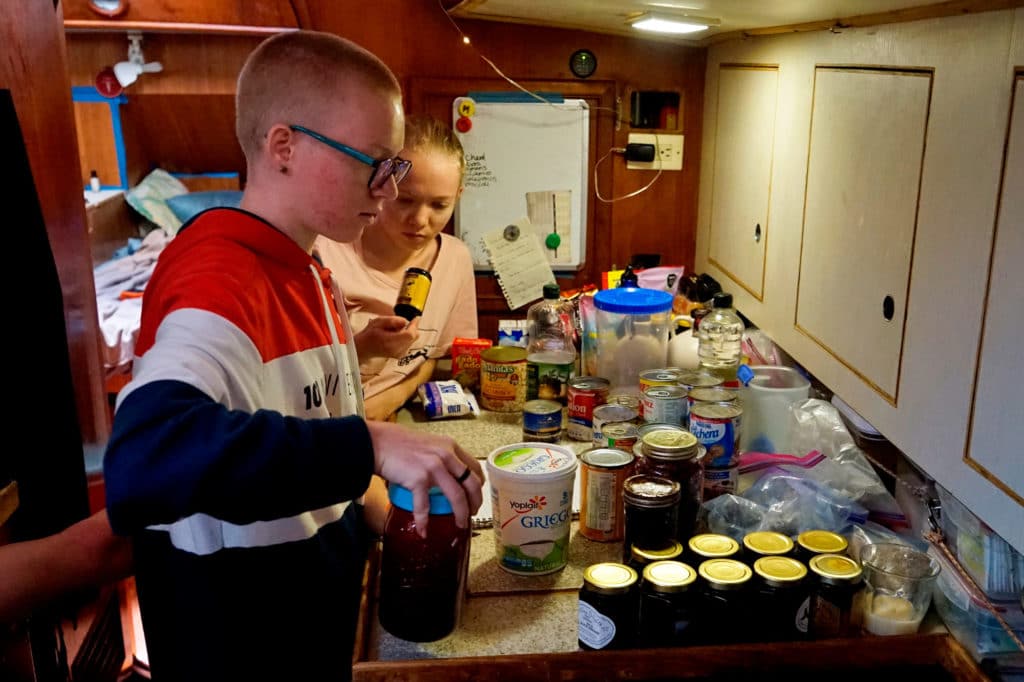
On the whiteboard behind them, I spy the note tucked in with the honey: “May it sweeten the day, whether in a perfect anchorage, or heading into short interval seas on the nose.” It did exactly that!
Magical night watch
Northbound in the canal de ballenas—whale channel—we remember the fin whale that surfaced next to our dinghy in this stretch. The blue whale that paced next to us another year. The gray we heard was up this way not long ago. Several whales spotted early on the journey, but back in the windy stretch at the outset was hard to tell their spouts from spume; we couldn’t discern their direction, much less their number or species.
I come up on watch around 10pm after hearing voices in the cockpit. Jamie, Mairen and Siobhan are taking in bioluminescence: striking vibrance in symmetrical shapes that rise and expand and fade. My timing is off and only a few sparklers twinkle our wake. But the millpond sea offers another treat: it is so still, and so dark, that each individual star is reflected in it like a mirror. Gazing dumbfounded for several minutes at the beauty, I go below for my camera at last—only to find in those few seconds that a breath of wind ripples everywhere and the moment is left only to memory. Timing off again!
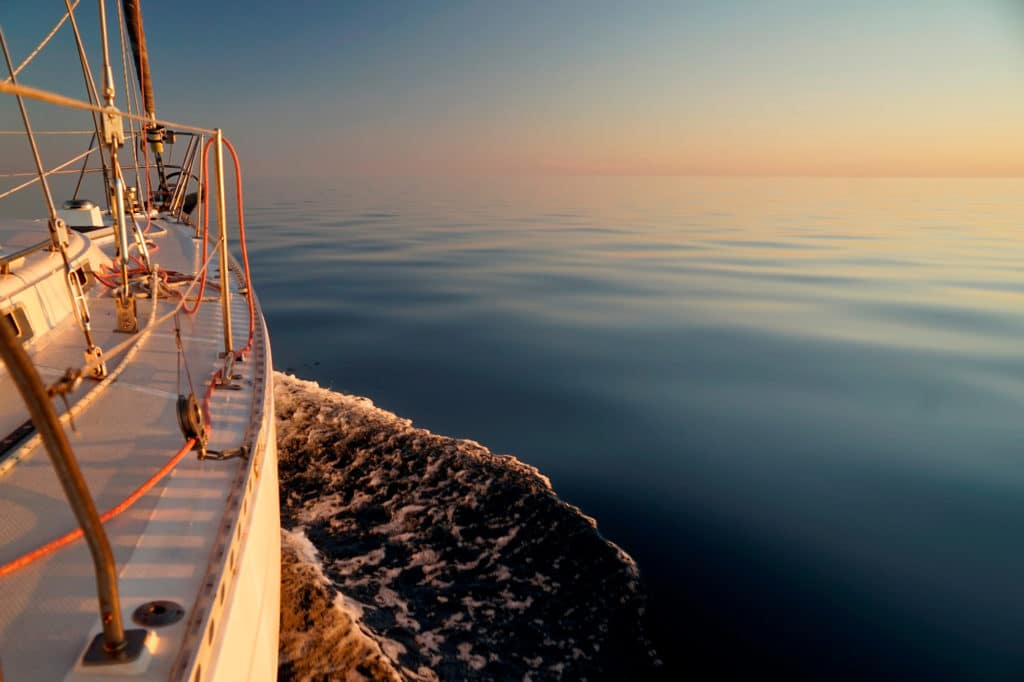
My watch passes uneventfully, with just a single shrimper. Red over white, fishing at night? This boat is lit more like a Christmas tree, but at least that makes it easy to keep clear! Darkness returns save a faint glow in the east that hints at pending moonrise. While waiting for it to peek over the horizon I simultaneously hear and feel the impact of a whale breaching very close to Totem. The night is so inky, I cannot even tell where it is—a boat length? Two? If there was any doubt, a loud exhale quells it. The whale—or whales?—breach five more times in succession. I listen breathlessly looking out in to the dark, simultaneously thrilled and terrified. The moon lights the surface of the water just a few minutes too late to assist.
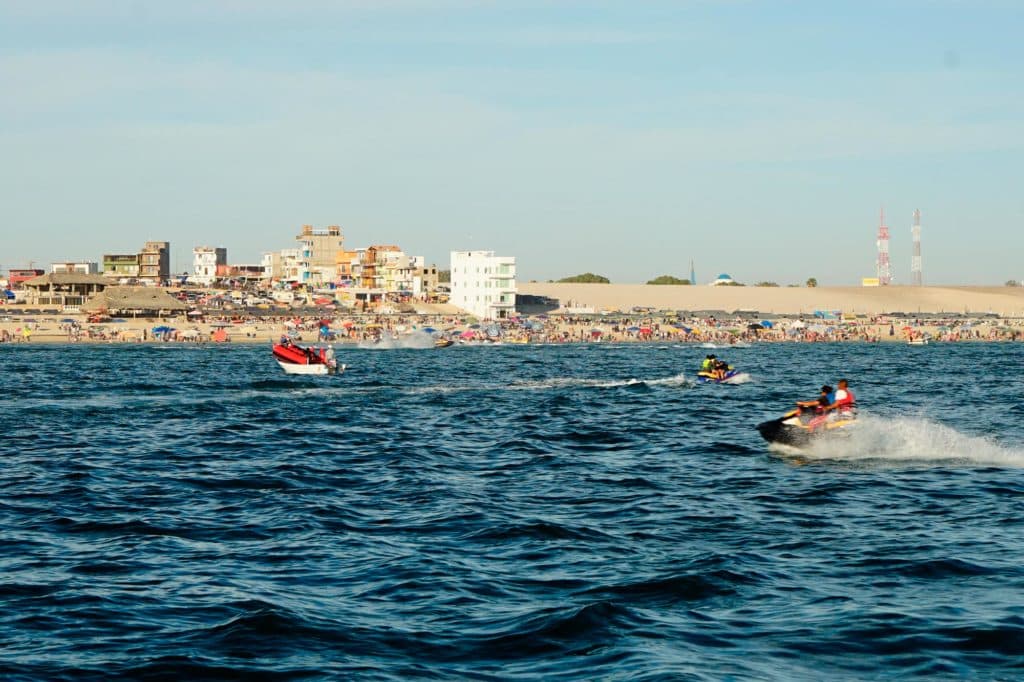
Sunrise promises another day of gliding through nutrient rich waters in the northern Sea. We arrive in Peñasco and snap into a new reality. As soon as our anchor is set, jet skiers turn Totem into a target, and our view is a beach packed with holiday frolicking (this is the end of Semana Santa, Holy Week, the biggest vacation time of the year for Mexico).
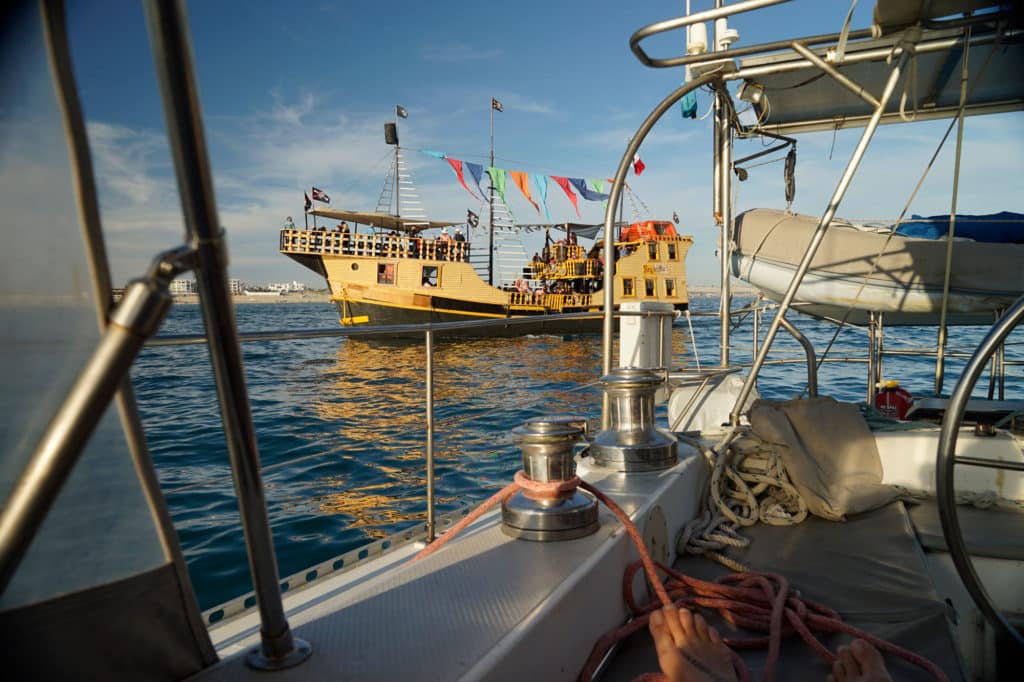
Lying in our aft-cabin berth last night, the gentle rock of the boat and lap of water on the hull make me prematurely nostalgic. Today we’ll haul out at Cabrales Boatyard again, and will be propped on the hardstand for months. But this bittersweet edge on returning to the bustle and music of Peñasco, leaving our peaceful time afloat, doesn’t even register when weighed against how much we look forward to seeing our friends again. The miles we won’t make this year will wait longer, and meanwhile, the Sea has made us a gift of her finest.
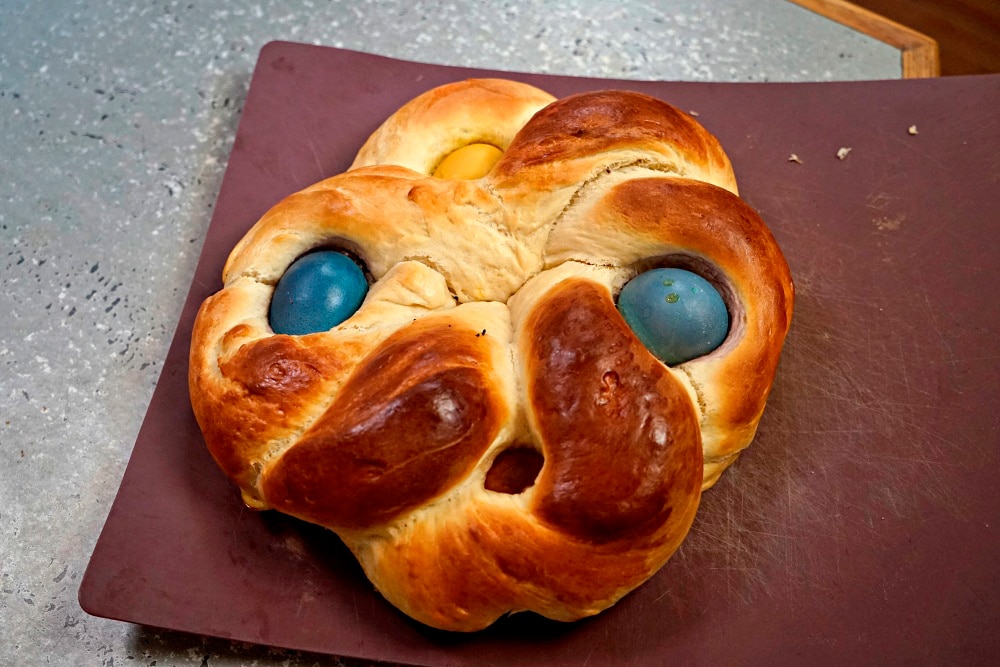
Braided Easter Egg Bread
- 2.5 cups flour
- 2 Tbsp dried milk (optional)
- 1/4 cup sugar
- 1 tsp salt
- 1 package / 2.5 tsp dry yeast
- 2/3 cup water
- 2 Tbsp butter, softened
- 2 eggs
- 5 raw, dyed eggs (optional)
Warm water, and place in a large bowl with a tablespoon or so of the sugar; and sprinkle yeast on top to proof.
When proofed, stir in 2 eggs and remaining sugar. Add softened butter, 1 c of the flour, milk powder, salt, and beat well.
Gradually add remaining flour, about half a cup at a time, until you have a soft dough. Knead: you can turn it out onto a floured surface, but I usually just knead it in the bowl. It’s easier underway, and less to clean up! When the dough smooth and elastic, it’s ready to rise. If you’ve gathered the sticky bits off the side of the bowl, just add a tablespoon or so of oil and swirl the dough ball to coat it and the sides of the bowl. Cruisers don’t want to use up any more water on dishes than necessary.
Rise until doubled. Punch down, divide in two parts, and let rest for 10 minutes. Then roll each round into a snake, about a yard/meter long. Twist these two snakes around each other loosely, then form a ring – pinching the ends together. Place on a baking sheet (I have a silicone baking mat underneath; without you’d want to grease it). Pull spaces between the bands of dough and slide dyed eggs between them. Let rise again.
Bake. Who has a boat oven that actually can be set to a temperature? Feel lucky if you do! Just get it hot! If you’re trying on land, 350°F should do it. I brushed an egg wash on top; you could also use melted butter. Neither is necessary, but the make a lovely golden crust. Baking times are as ephemeral as oven temperatures, but it’s around 45-55 minutes. The eggs you’ve inserted in the dough bake in the oven to a nice soft-boiled texture.








